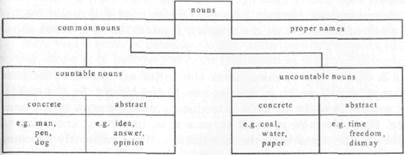An apposition,
e.g. He told us about his father, a teacher,who died inthe war.
The following classification seems to be suitable for the purpose:
ARTICLES
§ 1. The article is a structural word specifying the noun. The
absence of the article, which may be called the zero article,also
specifies the noun and has significance. J
There are two articles in English which are called thedefinite
and theindefinite article.
The use of articles, as well as their absence, has grammatical
meaning and follows certain rules. There are cases, however, in
which the use of articles cannot be accounted for grammatically
as it has become a matter of tradition. This is found in numerous
set phrases, as in: at night — in the night, in the distance — at a
distance, as aresult of — under the influence of, to take the trou
ble — to take care of, to be in danger — to be in a rage, etc.
The traditional use of articles is also found in other cases. For
example, names of countries are generally used without any article
but the names of certain countries or regions, owing to a well-es-
tablished tradition, are associated with the definite article (e.g. the
Crimea, the Caucasus, the Congo, the Sudan, the Tyrol, the Ruhr
and some others).
Thus, in dealing with the use of articles it will be necessary to
divide all the cases into two groups which may be called the gram-
matical use of articlesand the traditional use of articles.
The grammatical use of articles is dependent on the character
of the noun.
In order to describe the use of articles we need some classi-
fication of nouns upon which our description will be based.
1 The absence of the article is not to be confused with the deliberate omission of
the article for stylistic reasons as seen in newspaper headings, stage directions, tele-
grams, etc.
e.g. Newspaper headlines: Biggest Brain Drain Source in Britain
Fight over Market
Stage remarks: Catherine enters from kitchen, crosses down to window,
looks out.
 Note. Nouns denoting unique objects (e.g. the sun, the moon) or unique notions
Note. Nouns denoting unique objects (e.g. the sun, the moon) or unique notions
(e.g. the past, the plural) are neither countable nor uncountable.
As is seen from the above table, proper names form a special
category and the use of articles with them should be treated sepa-
rately. With common nouns, the use of articles is dependent on
whether a noun is countable or uncountable.
THEFUNCTIONS OFARTICLES WITHCOMMON NOUNS